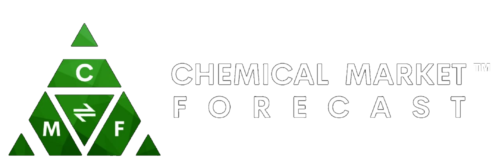Global Acetic Anhydride Market
The acetic anhydride market is experiencing significant growth, driven by its use in various applications such as cellulose acetate, pharmaceuticals, agrochemicals, and dyes. Acetic anhydride is a colorless liquid with a pungent odor, and it is produced by the reaction of acetic acid with ketene. The high reactivity of acetic anhydride makes it a popular reagent for various organic syntheses.
The growing demand for cellulose acetate, which is used in cigarette filters, eyeglass frames, and photographic film, is expected to be the primary driver of the market. The rising demand for pharmaceuticals, particularly in emerging markets, is also expected to boost the market growth.
The history of acetic anhydride dates back to the mid-19th century when it was first synthesized by the French chemist Charles Gerhardt in 1852. Gerhardt obtained acetic anhydride by heating a mixture of acetic acid and anhydrous acetic acid. He named the compound “anhydride acétique” and described its properties, including its ability to react with alcohols and amines.
In 1860, the German chemist August Wilhelm von Hofmann discovered that acetic anhydride could be used as an acetylating agent in organic synthesis. He used acetic anhydride to acetylate aniline, which led to the production of acetanilide, a compound that was later used as an analgesic and antipyretic.
During the late 19th century, acetic anhydride was used in the production of cellulose acetate, a polymer used in various applications such as photographic film and eyeglass frames. It was also used in the production of aspirin, an analgesic and anti-inflammatory drug.
In the early 20th century, the demand for acetic anhydride increased with the growth of the chemical industry. It was used in the production of various chemicals such as dyes, pigments, and pharmaceuticals. The use of acetic anhydride as a reagent in organic synthesis also increased, and it became an important tool for researchers and chemists.
Today, acetic anhydride is produced on a large scale using various methods such as the Wacker process and the ketene process. It is used in various industries such as pharmaceuticals, agrochemicals, and polymers, and it remains an important reagent in organic synthesis.
The Asia-Pacific region is the largest market for acetic anhydride, accounting for over 40% of the global market share. The region’s dominance can be attributed to the high demand for cellulose acetate and pharmaceuticals in countries like China, India, and Japan. The North American market for acetic anhydride is also expected to grow significantly due to the increasing demand for agrochemicals and pharmaceuticals in the region.
The market for acetic anhydride is highly competitive, with major players such as Celanese Corporation, Eastman Chemical Company, Jubilant Life Sciences, and BASF SE. These companies are focusing on expanding their product portfolio and strengthening their position in the market through strategic mergers and acquisitions. For instance, Celanese Corporation announced the acquisition of a 365,000 metric ton per year acetic anhydride plant in Singapore from Suzhou Sinopec Mitsui Chemicals.
The global pandemic has had a mixed impact on the acetic anhydride market. The closure of manufacturing plants and disruptions in supply chains have led to a decrease in demand for acetic anhydride in some industries. However, the rising demand for pharmaceuticals and medical equipment has led to an increase in demand for cellulose acetate, which has offset the negative impact of the pandemic on the market.
TABLE OF CONTENT
Global Acetic Anhydride Market Report
1 Market Introduction of Global Acetic Anhydride Market Report
2 Market Segmentation of Acetic Anhydride Market Report
2.1 Acetic Anhydride Market Segmentation By Region
2.2 Acetic Anhydride Market Segmentation By Type
2.3 Acetic Anhydride Market Segmentation By Crop Type
3 Cost Structure of Global Acetic Anhydride Market Report
4 Country Analysis of Global Acetic Anhydride Market Report
4.1 China
4.1.1 Acetic Anhydride Market Size in China
4.1.2 Acetic Anhydride Market Trends & Analysis in China
4.1.3 Key Acetic Anhydride companies in China
4.1.4 Regulatory Framework of Acetic Anhydride Market in China
4.2 Germany
4.2.1 Acetic Anhydride Market Size in Germany
4.2.2 Acetic Anhydride Market Trends & Analysis in Germany
4.2.3 Key Acetic Anhydride companies in Germany
4.2.4 Regulatory Framework of Acetic Anhydride Market in Germany
4.3 France
4.3.1 Acetic Anhydride Market Size in France
4.3.2 Acetic Anhydride Market Trends & Analysis in France
4.3.3 Key Acetic Anhydride companies in France
4.3.4 Regulatory Framework of Acetic Anhydride Market in France
4.4 Italy
4.4.1 Acetic Anhydride Market Size in Italy
4.4.2 Acetic Anhydride Market Trends & Analysis in Italy
4.4.3 Key Acetic Anhydride companies in Italy
4.4.4 Regulatory Framework of Acetic Anhydride Market in Italy
4.5 Netherland
4.5.1 Acetic Anhydride Market Size in Netherland
4.5.2 Acetic Anhydride Market Trends & Analysis in Netherland
4.5.3 Key Acetic Anhydride companies in Netherland
4.5.4 Regulatory Framework of Acetic Anhydride Market in Netherland
4.6 Russia
4.6.1 Acetic Anhydride Market Size in Russia
4.6.2 Acetic Anhydride Market Trends & Analysis in Russia
4.6.3 Key Acetic Anhydride companies in Russia
4.6.4 Regulatory Framework of Acetic Anhydride Market in Russia
4.7 Canada
4.7.1 Acetic Anhydride Market Size in Canada
4.7.2 Acetic Anhydride Market Trends & Analysis in Canada
4.7.3 Key Acetic Anhydride companies in Canada
4.7.4 Regulatory Framework of Acetic Anhydride Market in Canada
4.8 Mexico
4.8.1 Acetic Anhydride Market Size in Mexico
4.8.2 Acetic Anhydride Market Trends & Analysis in Mexico
4.8.3 Key Acetic Anhydride companies in Mexico
4.8.4 Regulatory Framework of Acetic Anhydride Market in Mexico
4.9 Singapore
4.9.1 Acetic Anhydride Market Size in Singapore
4.9.2 Acetic Anhydride Market Trends & Analysis in Singapore
4.9.3 Key Acetic Anhydride companies in Singapore
4.9.4 Regulatory Framework of Acetic Anhydride Market in Singapore
4.10 United Kingdom
4.10.1 Acetic Anhydride Market Size in United Kingdom
4.10.2 Acetic Anhydride Market Trends & Analysis in United Kingdom
4.10.3 Key Acetic Anhydride companies in United Kingdom
4.10.4 Regulatory Framework of Acetic Anhydride Market in United Kingdom
4.11 Switzerland
4.11.1 Market Size in Switzerland
4.11.2 Market Trends & Analysis in Switzerland
4.11.3 Key Acetic Anhydride companies in Switzerland
4.11.4 Regulatory Framework of Acetic Anhydride Market in Switzerland
4.12 Brazil
4.12.1 Market Size in Brazil
4.12.2 Market Trends & Analysis in Brazil
4.12.3 Key Acetic Anhydride companies in Brazil
4.12.4 Regulatory Framework of Acetic Anhydride Market in Brazil
4.13 USA
4.13.1 Market Size in US
4.13.2 Market Trends & Analysis in US
4.13.3 Key Acetic Anhydride companies in US
4.13.4 Regulatory Framework of Acetic Anhydride Market in US
4.14 Japan
4.14.1 Market Size in Japan
4.14.2 Market Trends & Analysis in Japan
4.14.3 Key Acetic Anhydride companies in Japan
4.14.4 Regulatory Framework of Acetic Anhydride Market in Japan
4.15 South Korea
4.15.1 Market Size in South Korea
4.15.2 Market Trends & Analysis in South Korea
4.15.3 Key Acetic Anhydride companies in South Korea
4.15.4 Regulatory Framework of Acetic Anhydride Market in South Korea
4.16 India
4.16.1 Market Size in India
4.16.2 Market Trends & Analysis in India
4.16.3 Key Acetic Anhydride companies in India
4.16.4 Regulatory Framework of Acetic Anhydride Market in India
4.17 Thailand
4.17.1 Market Size in Thailand
4.17.2 Market Trends & Analysis in Thailand
4.17.3 Key Acetic Anhydride companies in Thailand
4.17.4 Regulatory Framework of Acetic Anhydride Market in Thailand
4.18 Russia
4.18.1 Market Size in Russia
4.18.2 Market Trends & Analysis in Russia
4.18.3 Key Acetic Anhydride companies in Russia
4.18.4 Regulatory Framework of Acetic Anhydride Market in Russia
4.19 Malaysia
4.19.1 Market Size in Malaysia
4.19.2 Market Trends & Analysis in Malaysia
4.19.3 Key Acetic Anhydride companies in Malaysia
4.19.4 Regulatory Framework of Acetic Anhydride Market in Malaysia
4.20 Saudi Arabia
4.20.1 Market Size in Saudi Arabia
4.20.2 Market Trends & Analysis in Saudi Arabia
4.20.3 Key Acetic Anhydride companies in Saudi Arabia
4.20.4 Regulatory Framework of Acetic Anhydride Market in Saudi Arabia
5 Acetic Anhydride Market Trends
5.1 Acetic Anhydride Market Trends- Key Drivers
5.2 Acetic Anhydride Market Trends- Key Restraints
5.3 Acetic Anhydride Market Trends- Key Challenges
5.4 Porter’s Five Forces Analysis of Acetic Anhydride Market
5.5 PEST Analysis- Acetic Anhydride Market
6 Acetic Anhydride Market Forecast
6.1 Acetic Anhydride Market Forecast By Region
6.1.1 North America
6.1.2 Europe
6.1.3 APAC
6.1.4 Middle East
6.1.5 ROW
6.2 Acetic Anhydride Market Forecast By Type
6.2.1 Fertilizer
6.2.2 Pesticide
6.3 Acetic Anhydride Market Forecast By Crop Type
6.3.1 Fruits & Vegetables
6.3.2 Oilseed and Pulses
6.3.3 Cereals & Grains
6.3.4 Other
7 Supply Chain of the Acetic Anhydride Market Analysis
8 Opportunity Analysis
9 Scenario Analysis
10 Key Company Profiles
11 Strategic Conclusions – Acetic Anhydride Market Report
12 Abbreviations used in Acetic Anhydride Market Report






Reviews
There are no reviews yet.